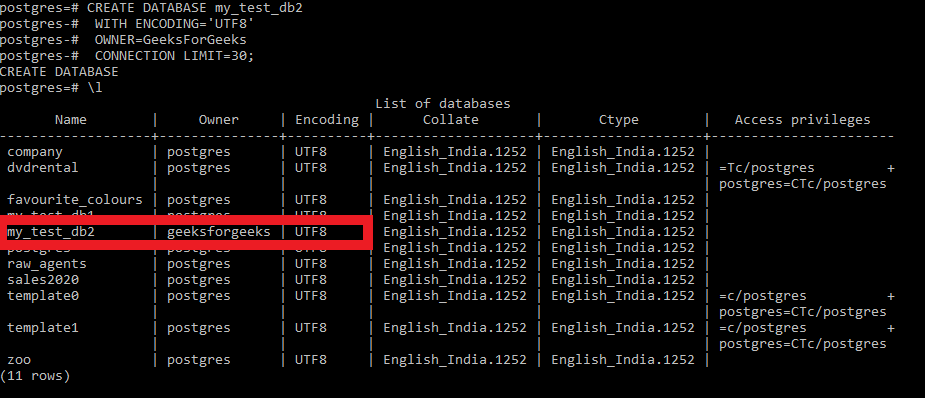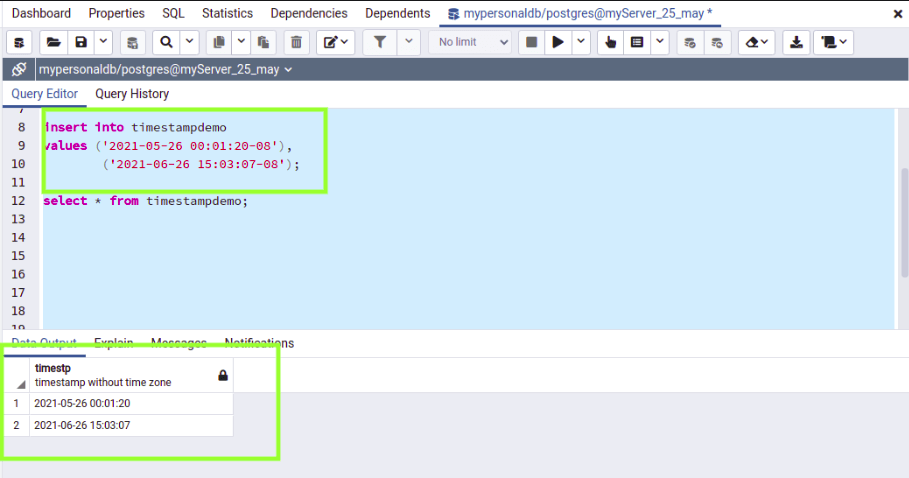

In this tutorial, you have learned how to use the PostgresQL CURRENT_TIME() to get the date and time at which the transaction starts.

However, the function name TRANSACTION_TIMESTAMP clearly reflects what the function returns. In PostgreSQL, the TRANSACTION_TIMESTAMP() function is equivalent to the CURRENT_TIMESTAMP function. The following picture illustrates the result:Īs you can see the created_at column was populated by the date and time at which the statement executed. Third, verify whether the insert has been taken place correctly using the following query: SELECT In this statement, we did not specify the value for the created_at column, therefore, it defaulted to the timestamp at which the transaction started. VALUES( 'Testing current_timestamp function') Second, insert a new row into the note table: INSERT INTO note(message) The default value of the created_at column is provided by the result of the CURRENT_TIMESTAMP() function.

CREATE TABLE note(Ĭreated_at TIMESTAMP WITH TIME ZONE DEFAULT CURRENT_TIMESTAMP Let’s take a look at the following example.įirst, create a table named note that has the created_at column is a TIMESTAMP WITH TIME ZONE column. Like the NOW() function, the CURRENT_TIMESTAMP() function can be used as the default value of a timestamp column. Internally, the CURRENT_TIMESTAMP() is implemented with the NOW() function, therefore, the column alias is NOW. The following example shows how to use the CURRENT_TIMESTAMP() function to get the current date and time: SELECT CURRENT_TIMESTAMP Ĭode language: SQL (Structured Query Language) ( sql ) The CURRENT_TIMESTAMP() function returns a TIMESTAMP WITH TIME ZONE that represents the date and time at which the transaction started. cursor.execute ('''CREATE TABLE timestampdata (timestamp TIMESTAMP,timestamptimezone TIMESTAMPTZ) ''') cursor.execute ('''INSERT INTO timestampdata VALUES (' 12:07:18-09',' 12:07:18-09') ''') sql1 '''select from timestampdata ''' cursor.execute (sql1) for i in cursor.fetchall (): print(i) mit () conn.
Postgresql timestamp create table full#
If you omit the precision argument, the CURRENT_TIMESTAMP() function will return a TIMESTAMP with a time zone that includes the full fractional seconds precision available. The precision specifies the number of digits in the fractional seconds precision in the second field of the result. The PostgreSQL CURRENT_TIMESTAMP() function accepts one optional argument. The following illustrates the syntax of the PostgreSQL CURRENT_TIMESTAMP() function: CURRENT_TIMESTAMP(precision)Ĭode language: SQL (Structured Query Language) ( sql ) Arguments The PostgreSQL CURRENT_TIMESTAMP() function returns the current date and time with time zone, which is the time when the transaction starts.


 0 kommentar(er)
0 kommentar(er)
